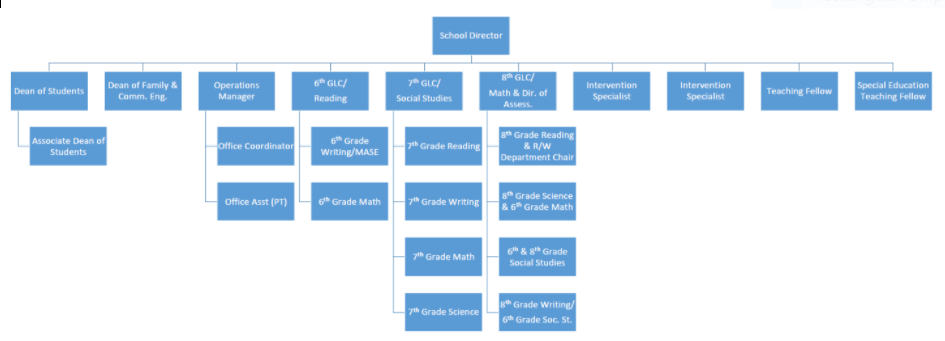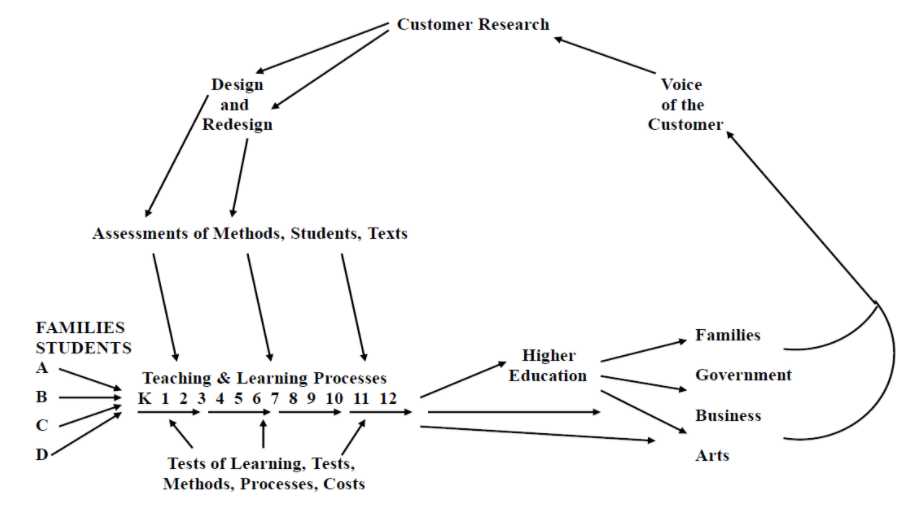What is systems thinking?
Note: This is Part II in a five-part series on Deming’s System of Profound Knowledge.
In my last post, I discussed the influence that W. Edwards Deming has had on my continual improvement work. The culmination of his life’s work was the System of Profound Knowledge and its four components. The first of these components - Appreciation for a System - is the focus of this post.
Perhaps the most radical idea put forth by Deming is the idea that any outcome we see within our system is the result of more than the skills and efforts of the individuals that work within the organization. Organizations are characterized by a set of interactions among the people who work there, the tools and materials they have at their disposal, and the processes through which these people and resources join together to accomplish its work. Central to this idea is that most of the performance differences observed between individuals are generated by the complex and dynamic system itself of which workers are only one part.
The underappreciation of systems thinking is a significant impediment to improving schools.
Underappreciation of Systems
If you asked the typical school leader to show you their organizational structure, what would be produced would most likely look very much like the diagram in Figure 1. This is the organizational chart for one of the middle schools at United Schools Network from the 2018-2019 school year.
Figure 1. USN Middle School Organizational Chart (2018-2019)
When this is the picture you have in your head when asked about the structure of your organization, it is only natural that when developing improvement plans you would almost exclusively focus on attempting to improve the people within the organization. This is what schools do when confronted with problems; they turn to professional development in order to improve the individual practice of teachers and administrators. And yet, despite spending billions of dollars on professional development activities each year in the United States, well-regarded studies by organizations such as the American Institutes for Research (AIR) show no measurable results from this spending. In one such study, AIR researchers were surprised to find no impact on either student test scores or on classroom performance evaluations even when the training was considered rigorously aligned to the tenets of best practice for educator professional development.
I would contend that an underappreciation for systems thinking lies at the heart of this issue. After studying Deming’s work in this area, I learned that one of the first things he taught the Japanese upon his arrival there in 1950 was that Japan must see itself as a system (Deming is highly regarded in Japan for the work he did there over the course of nearly three decades). Similarly, a very different image begins to emerge when you view schools from a systems perspective. That same middle school whose organizational chart is displayed above is illustrated in Figure 2 below through a systems lens.
A Systems View
Viewing the USN middle school as a system as displayed in Figure 2 opens up numerous possibilities for improvement beyond simply working to improve the individuals that work in the school. In fact, it would be far more productive to work to improve the system in which the school sits because Deming often said that between 85-98% of the results of an organization could be attributed to the system as opposed to individual workers within the system. When viewing the middle school through the lens of the organizational chart in Figure 1, that is hard to comprehend because all you see is the individuals. When viewing the system in which the middle school sits as displayed in Figure 2, this becomes far more obvious.
Figure 2. USN Middle School: A Systems View (from The New Philosophy for K-12 Education)
The system is not only made up of the teachers and students within the school building, but it also includes students and their families and the communities in which they live. It includes higher education as both a customer as well as a supplier of educators. It includes government and the funding resources it supplies to both the school as well as to the community in which it is situated. The government also sets policies for the school such as state learning standards and tests. All of these are components of the system, and if you follow the arrows around the diagram beginning with the school you start to appreciate the complexity of the system. Following the arrows around the diagram beginning with the school and moving to the right, then up, then left, and finally back down to the school you see the systems view also forms a natural feedback loop from which to learn. Viewed in this way, not only are there significantly more individual components to consider in the systems view, there is also the interaction of these components that is important. Systems thinking expert Russ Ackoff put it this way:
A system is never the sum of its parts; it’s the product of their interaction. The performance of a system doesn’t depend on how the parts perform taken separately, it depends on how they perform together – how they interact, not on how they act, taken separately. Therefore, when you improve the performance of a part of a system taken separately, you can destroy the system.
When the individual workers, organizational components, and the interactions between both the individuals and those components are taken into account, this idea that the system accounts for at least 85% of the variation of outcomes we see in schools becomes much clearer. So then does the challenge of improving these systems.
***
John A. Dues is the Chief Learning Officer for United Schools Network, a nonprofit charter-management organization that supports four public charter schools in Columbus. Send feedback to jdues@unitedschoolsnetwork.org.


